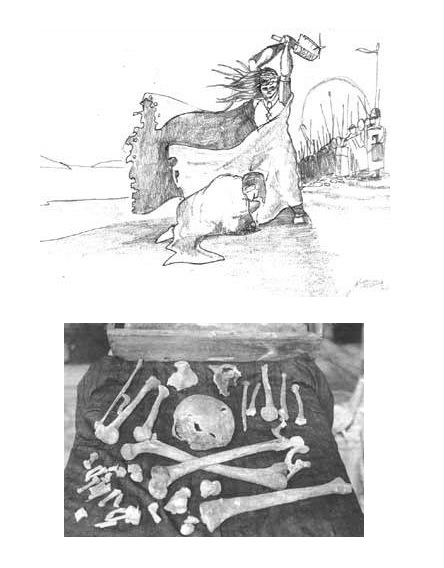The Bones of St Magnus
Pastor’s Epistle—April, A.D. 2016 C
April’s Warrior Saint
To the north of Scotland lie the Orkney Isles, once home to
the Jarls (Earls) of Orkney. The Jarls ruled not only the Orkney and Shetland
Islands as vassals to the King of Norway, but also the northern Scottish
territories of Caithness and Sutherland as vassals to the King of Scots. The
influential Jarls had married into both royal families, and thus stood as a
bridge between the Celtic and Viking worlds. George Washington and his family
claimed descent from the old Jarls of Orkney.
One of the most famous of the Orcadian Earls was a fellow
named Magnus Erlendsson (AD 1080-1118). His father had a twin brother, and the
two had ruled their Jarldom together in peace. Their children, however—Magnus
and his cousin Haakon—were not to have such an irenic relationship.
Jarl Magnus was known for his piety and holiness, which his
fellow Vikings mistook for cowardice. When the Norse King forced young Magnus
to join a raid against Wales, Magnus refused to fight because he had no quarrel
with the Welsh. To prove that he was no coward, however, he remained on deck
during the fighting, exposing himself to great danger while calmly reciting the
Psalms. Later in life, Magnus would show himself to be a strong ruler and a powerful
fighter. But he would not make war unjustly.
Over time it became clear that Magnus’ cousin Haakon would
not be content with the joint rule that their fathers had enjoyed. He wanted
all of Orkney for his own. Magnus agreed to meet on a neutral island so that
they could treat for peace, but Haakon double-crossed and captured him. Magnus warned
Haakon that if he murdered him in cold blood, Magnus’ soul would rise to Heaven
but Haakon would surely risk damnation. Shaken, Haakon now tried to spare Magnus,
but his men swore that one or the other of the Jarls must die. And so Haakon
forced his poor reluctant cook to dispatch Magnus with an axe.
Magnus assured the cook of his forgiveness, asking only that he be struck on the forehead as a Viking rather than beheaded like a common criminal. And so it came to pass. Accepting martyrdom in this way, Magnus almost immediately became revered as a saint. Miracles abounded around his body. He appeared to the common folk in dreams. Bishops who resisted the veneration of his relics found themselves struck temporarily blind. Eventually Magnus’ nephew Rognvald—who would also go on to become a Viking, a Jarl, and a Saint—built a great cathedral in Magnus’ honor, which became the mother church of the Orkneys. St Magnus Day is April 16, the anniversary of his death.
Magnus assured the cook of his forgiveness, asking only that he be struck on the forehead as a Viking rather than beheaded like a common criminal. And so it came to pass. Accepting martyrdom in this way, Magnus almost immediately became revered as a saint. Miracles abounded around his body. He appeared to the common folk in dreams. Bishops who resisted the veneration of his relics found themselves struck temporarily blind. Eventually Magnus’ nephew Rognvald—who would also go on to become a Viking, a Jarl, and a Saint—built a great cathedral in Magnus’ honor, which became the mother church of the Orkneys. St Magnus Day is April 16, the anniversary of his death.
When the Reformation rolled through Scotland a few centuries
later, little changed. The Orcadians kept their same priest. Religious icons
were flipped around and made into hymn boards. And the bones of Sts Magnus and
Rognvald were hidden in the cathedral’s support pillars, behind stones marked
with small crosses, that they might be rediscovered by later generations. The
bones of St Magnus are still there today, complete with axe wound: a witness
that saints can be leaders, warriors, and men of peace at one and the same
time. Indeed, we often have to be.

Comments
Post a Comment